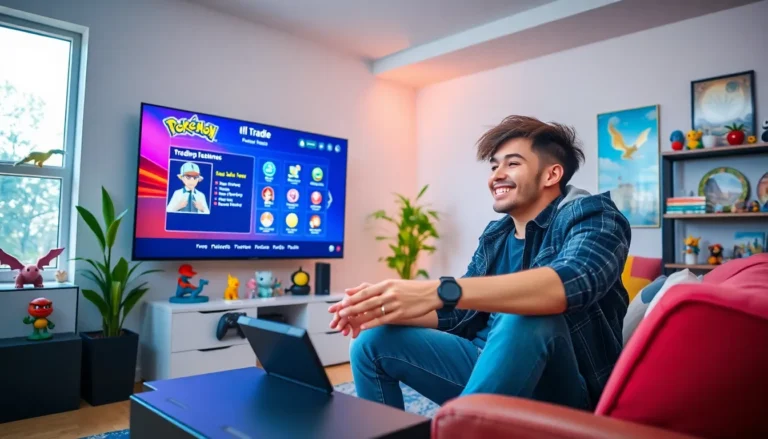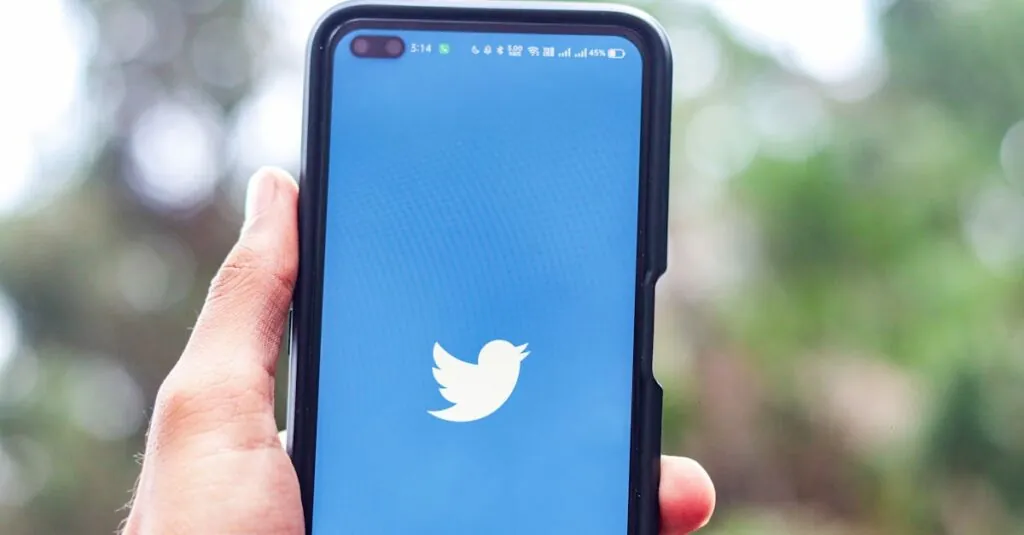Table of Contents
ToggleImagine this: you’re out and about, your friend’s phone is gasping for power like it just ran a marathon, and you’re the only one with a fully charged iPhone. Sounds like a superhero moment, right? But wait—can your iPhone come to the rescue with some wireless power sharing magic?
Overview of Wireless Power Sharing
Wireless power sharing enables devices to transfer power without cables. Many users seek to understand if their iPhone supports this feature. Apple does not currently include wireless power sharing in its iPhone models. This means that iPhones cannot wirelessly charge other devices, such as smartphones or earbuds.
While some other brands, like Samsung, offer wireless power sharing, Apple’s iPhone models focus on fast charging and reliable wireless charging. The lack of this feature can be limiting for users looking to assist friends in need. Batteries in iPhones don’t act as charging pads for other electronics.
Nevertheless, Apple’s accessories show compatibility with its wireless charging. AirPods and Apple Watch models charge effectively on iPhones, relying on specific accessories like charging pads or docks. Users can utilize charging cases for AirPods to recharge them conveniently.
For those interested in wireless charging, recent iPhone models support Qi wireless charging standards. This allows users to recharge their devices efficiently on compatible charging pads. While it presents a downside not to have power sharing, it does not affect the convenience of charging within Apple’s ecosystem.
Taking into account the exclusive capabilities of the iPhone, potential buyers may prefer brands with wireless power sharing. Understanding this limitation can help set expectations before purchasing an iPhone.
Features of Wireless Power Sharing
Wireless power sharing allows devices to transfer energy without the need for cables. While this feature enhances usability in many brands, Apple iPhones do not support it.
Compatibility With Other Devices
Apple’s iPhones do not enable power sharing with other smartphones. However, they do charge accessories like AirPods and Apple Watch using the iPhone’s wireless charging system. This compatibility relies on Apple’s specific accessories designed for efficient energy transfer. Third-party devices may not work as reliably, limiting the iPhone’s functionality in this regard. When needing to recharge accessories, users can benefit from the seamless connection within Apple’s ecosystem.
Charging Speed and Efficiency
Charging speed for iPhones remains optimized through fast and wireless charging, but power sharing isn’t part of this capability. It supports Qi certified wireless charging standards, which ensure efficient energy transfer on compatible charging pads. Fast charging modes can reach up to 20 watts, making recharge times quicker. In contrast, devices utilizing power share typically experience slower charging speeds. Although convenient, this slower performance doesn’t match the standard charging speed of iPhones, which focuses on enhancing user experience primarily for their own devices.
iPhone Models Supporting Wireless Power Sharing
No iPhone model supports wireless power sharing. This limitation affects iPhone users who want to share battery power with other devices.
iPhone 12 and Later Models
Launched in 2020, the iPhone 12 series and newer models focus on advanced charging features, but they do not include wireless power sharing. Despite their Qi wireless charging capability, these models maintain fast charging speeds up to 20 watts. Users can charge AirPods and Apple Watches efficiently with the right accessories, although sharing power with other smartphones remains unsupported.
Comparison With Previous Models
Earlier iPhone models also lack wireless power sharing. The iPhone 11 series and older versions utilize the same Qi standards for charging but do not feature advanced power-sharing technology. Users should expect reliable wireless charging with these devices, but the inability to share power restricts convenience compared to competitors like Samsung.
User Experience and Feedback
User experience reflects significant insights into the limitations of iPhones regarding wireless power sharing. Many users express disappointment, especially when comparing iPhones to brands like Samsung that offer this feature. The desire to aid friends or family with low battery levels often leads to frustration.
Real-World Usage Scenarios
Users frequently encounter situations where wireless power sharing could enhance their experience. A common scenario involves a friend needing a charge during an outing. Without the capability to share battery life, navigating this situation can be challenging. Some users resort to carrying portable chargers, which can feel cumbersome. In summer festivals or long trips, friends often wish for the convenience of sharing power directly from their iPhones. The absence of this feature leads to missed opportunities for camaraderie.
Potential Limitations and Drawbacks
Several drawbacks stem from iPhones lacking wireless power sharing. First, users often find themselves reliant on physical charging methods, which can restrict mobility. Those who own multiple devices may experience increased frustration from needing different chargers. Many users report slower charging speeds when utilizing wireless charging. This can detract from the overall efficiency of energy use, highlighting the inconsistency as compared to other devices. Depending on third-party accessories can also lead to unreliable performance, creating further limitations.
The lack of wireless power sharing in iPhones is a notable limitation for users accustomed to the convenience offered by competing brands. While iPhones excel in fast charging and reliable wireless charging for Apple accessories, they fall short in scenarios where users want to share battery life with others. This absence can lead to frustration during outings or events when a quick charge could foster camaraderie.
For those considering an iPhone purchase, it’s essential to weigh this drawback against the benefits of its charging capabilities. Ultimately, the choice may come down to personal preferences and lifestyle needs, especially for users who value the ability to share power on the go.







